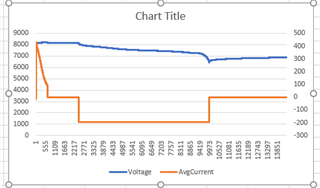Other Parts Discussed in Thread: GPCCHEM
Tool/software:
Hello,
I have tried multiple times to complete the learning cycle with the battery pack manager bq40z80 and it always fails after the charging cycle.
Discharging and relaxing afterwards worked properly.
But after the charging cycle the battery pack which contains of two cells goes into the overcharging protection (the "OC"-bit is set) and the FC bit does not set.
I have also attached the csv files that tracked the discharging and charging process.
The chemical identification has been conducted properly before attempting the learning cycle.
Thanks for your help in advance,
Dino
learning_cycle_log_2024_06_03.csvlearning_cycle_log_2024_06_04.csv


